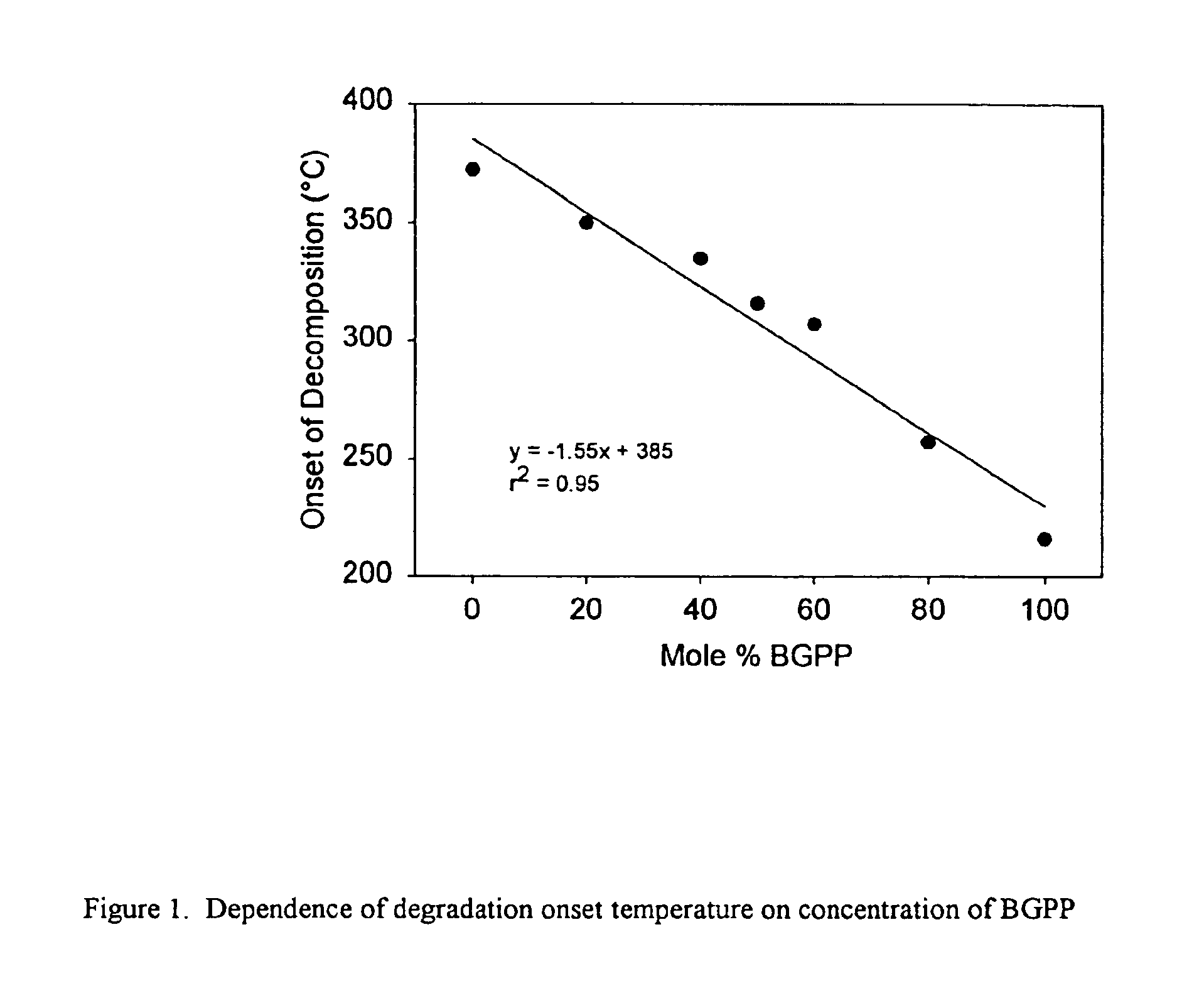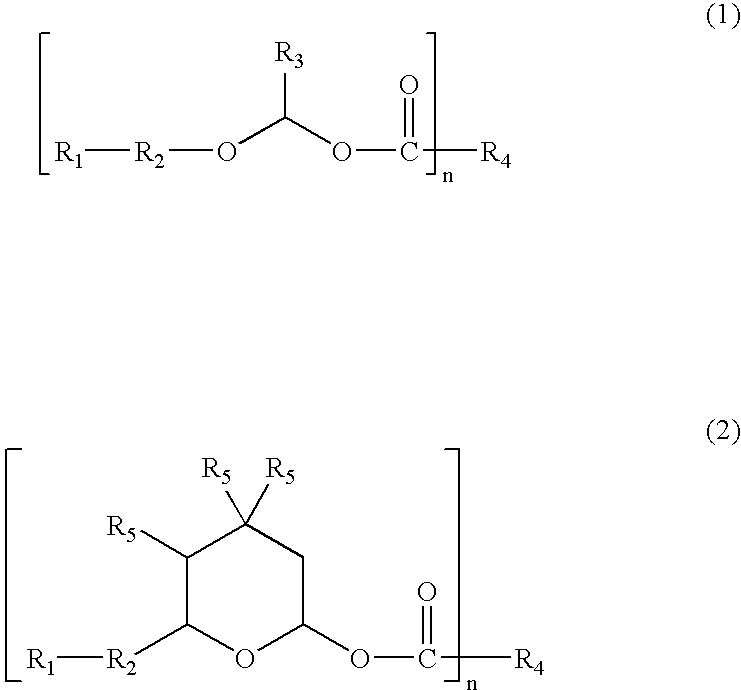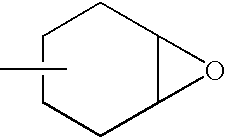Reworkable epoxidized 1-(cyclo) alkenyl ether/polycarboxylic acid product
a polycarboxylic acid and epoxidized product technology, applied in the direction of organic chemistry, adhesive types, semiconductor/solid-state device details, etc., can solve the problems of difficult replacement of the assembly without destroying or scrapping the structure, and the reliability of the solder connection between the circuit board and the csp/bga/lga often becomes suspect, and the resin which remains on the substrate is not disclosed. , to achieve the effect of reducing the cost o
- Summary
- Abstract
- Description
- Claims
- Application Information
AI Technical Summary
Benefits of technology
Problems solved by technology
Method used
Image
Examples
example 1
Synthesis of 1-Propenyl Glycidyl Ether (PGE)
[0064]This example describes a method for preparing 1-propenyl glycidyl ether (PGE), a 1-alkenyl ether, from readily available and inexpensive reagents. The reaction scheme is illustrated below. Once formed, this compound becomes a useful reactant to make reworkable epoxy compounds and compositions in accordance with the present invention.
[0065]To a 1-liter reaction flask equipped with a magnetic stirrer, condenser, thermocouple, nitrogen inlet and heating mantel was added allyl glycidyl ether (342 g; 3.0 moles) and tris(triphenylphosphonium)ruthenium (II) chloride (5.23 g; 5.45 millimoles). The mixture developed a brown color as the catalyst was dissolved. The solution was stirred and heated to 120° C. under a nitrogen atmosphere. After 4 hours, the reaction mixture was cooled to room temperature and distilled under vacuum to give the isomerized product, 1-propenyl glycidyl ether as a colorless liquid, b.p. 58-62° C. at 20 torr (304 g, 8...
example 2
Synthesis of Bis-(α-glycidoxypropyl)Glutarate (BGPG)
[0067]This example describes a method for preparing, in the absence of undesirable acidic catalysts, curable epoxidized compounds according to the invention which are reaction products of PGE prepared in Example 1 and a commercially available polycarboxylic acid, glutaric acid. The reaction scheme is illustrated below.
[0068]To a 250 ml reaction flask equipped with a magnetic stirrer heating mantel and thermocouple was added PGE (50.0 g, 0.439 moles) and glutaric acid (24.6 g, 0.187 moles). The mixture was heated to 90° C., during which time the acid dissolved in the PGE. Heating and stirring were continued for 5 hours. The reaction mixture was cooled to room temperature, dissolved in acetone (200 mL) and filtered through a short column of basic alumina to remove traces of unreacted acid. The solvent and excess PGE were removed by distillation under reduced pressure to give the bis-(α-glycidoxypropyl)glutarate (BGPG) (38.1 g; 57% y...
example 3
Synthesis of Bis-(α-glycidoxypropyl)Pimelate (BGPP)
[0069]This example describes the process of preparing the reworkable epoxide compound BGPP in accordance with the present invention. The reaction scheme is illustrated below.
[0070]To a 250 ml reaction flask equipped with a magnetic stirrer, heating mantel and thermocouple was added PGE (66.3 g, 0.58 moles) and pimelic acid (40.0 g, 0.25 moles). The mixture was heated and stirred at 100° C. for 50 hours. After cooling to 65° C., the reaction flask was connected to a vacuum pump and excess PGE was removed over 3 hours at a pressure of 350 mtorr. Bis-(α-glycidoxypropyl)pimelate (BGPP) was isolated in quantitative yield as a viscous oil. The structure of the product was confirmed by 1H NMR and IR analyses.
PUM
| Property | Measurement | Unit |
|---|---|---|
| Temperature | aaaaa | aaaaa |
| Temperature | aaaaa | aaaaa |
| Percent by mass | aaaaa | aaaaa |
Abstract
Description
Claims
Application Information
 Login to View More
Login to View More - R&D
- Intellectual Property
- Life Sciences
- Materials
- Tech Scout
- Unparalleled Data Quality
- Higher Quality Content
- 60% Fewer Hallucinations
Browse by: Latest US Patents, China's latest patents, Technical Efficacy Thesaurus, Application Domain, Technology Topic, Popular Technical Reports.
© 2025 PatSnap. All rights reserved.Legal|Privacy policy|Modern Slavery Act Transparency Statement|Sitemap|About US| Contact US: help@patsnap.com



